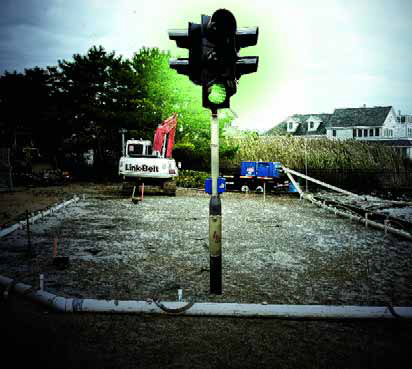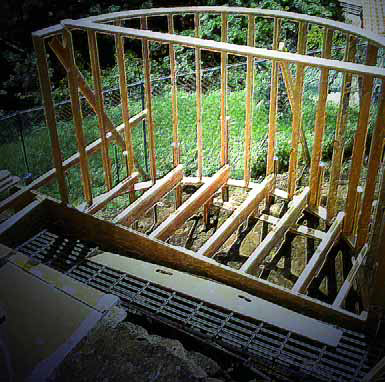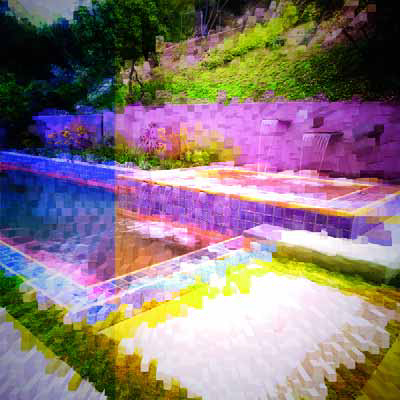spa design
Sometimes the simple things make all the difference between success and failure. For all of the high-flown conceptualizing that drives much of what so many watershapers do these days, there's no escaping the need for attention to
In the design and construction of any watershape, there are a number of points in the process where you can see big differences between the way custom designers and contractors do things and the way production/volume-oriented companies go about their business. From first conversations with clients straight through to commissioning the system and turning it over to the homeowners, it's easy to spot these distinctions and define key differences. To illustrate just one of these areas, let me discuss the case of the permitting phase for the project on Long Beach Island, N.J., I began covering two issues ago. What's involved here is a cluster of issues that occurred more or less simultaneously in the project's early going. The elements of this cluster may not seem directly related to one another, but
One of the things I've referred to repeatedly through the years is my interest in quality forming for watershapes. I look at it this way: If the job is about creating quality reinforced-concrete structures, then precisely controlling their dimensions and contours stands at the very heart of the art and craft of watershaping. And all I'm recommending here is simply following the lead of the experts who install building foundations and structural walls by using completely rigid materials and support frameworks. To drive that point home, I want to discuss the forming of one specific detail - and define a right way of getting it done. One of my trademarks is the fact that I build many pools that are
One of the things I've referred to repeatedly through the years is my interest in quality forming for watershapes. I look at it this way: If the job is about creating quality reinforced-concrete structures, then precisely controlling their dimensions and contours stands at the very heart of the art and craft of watershaping. And all I'm recommending here is simply following the lead of the experts who install building foundations and structural walls by using completely rigid materials and support frameworks. To drive that point home, I want to discuss the forming of one specific detail - and define a right way of getting it done. One of my trademarks is the fact that I build many pools that are
My last two "Details" should make it pretty clear that I'm more enthusiastic about tile than I am about any other surface material for watershapes. In October, we covered the use of color while focusing on tile, and in November there was a discussion of my favorite suppliers and their distinctions. This time, I'll bring the sequence to a conclusion by looking at the process of selecting tile and at the ways I blend tile mosaics. My enthusiasm extends from the fact that tile in watershapes is incredibly dynamic - so visually flexible, so durable and, if done well, so elegant. It can be used either as a
In a word, the project pictured in these pages is about the power and value of collaboration. I was originally called in to consult on the planting design for a backyard in need of remodeling. A couple of months into the process, the clients informed me that they hated their existing pool and asked me if I knew of a pool contractor named Randy Beard, who had worked with them previously on another of their residences. I offered to contact Beard and discuss the project with him: We had known about each other for years, mostly through WaterShapes columns and articles, but to that point we'd never had the opportunity to work together. The clients had said they wanted to remove the spa from the pool and perhaps raise it to create a spillway into the pool. Beard and I quickly came to the same conclusion: Revamping the pool would neither be cost-effective nor would it achieve the outcome the clients desired. Pointed discussions and budget reviews led to the determination that the existing pool/spa combination should be abandoned in favor of something that worked better to generate a sense of space, greater functionality and enhanced aesthetic appeal. Although we didn't set out to tackle the project as a team, Beard and I wound up working hand in glove with a synergy that was valuable to both of us - especially in
Few things are as important to the aesthetic impression made by swimming pools, spas and other watershapes as the colors you select to use in it and around them. Take tile as an example. Whether it's just a waterline detail, a complete interior finish or some elaborate mosaic pattern, it serves to draw the eye into a design. If the color and material selections work, the scene can become extraordinarily elegant and beautiful. If they don't, you can have a major eyesore on your hands. The amazing thing to me is how few watershapers ever really consider the importance
Everywhere you turn these days, you see watershapers tackling projects that would have been unthinkable even a few years ago. It wasn't that long ago that simply raising a spa seemed like a big challenge, but these days vanishing edges, perimeter overflows and other ambitious details have become relatively common. And it's not just technology: Watershapers are gravitating toward great materials, colors, hardscape, plants and amenities - signs of real growth and, for the most part, a very good thing. With this broadening list of possibilities, however, have come some growing pains. The industry's like a teenager with
Value is measured and determined in a variety of ways. When it comes to pools and spas, for example, I'd say that the straight-dollar value is only one of several yardsticks and that, for many clients, it's no longer the one that tops their lists. Instead, beauty, health benefits, artistic merit, pride of ownership and emotional appeal are more important than price tag for many of them - a wonderful trend, to my way of thinking. These measures of value, of course, are highly subjective. Every client is a little bit different, and the relative value of non-monetary factors can be





















David Tisherman